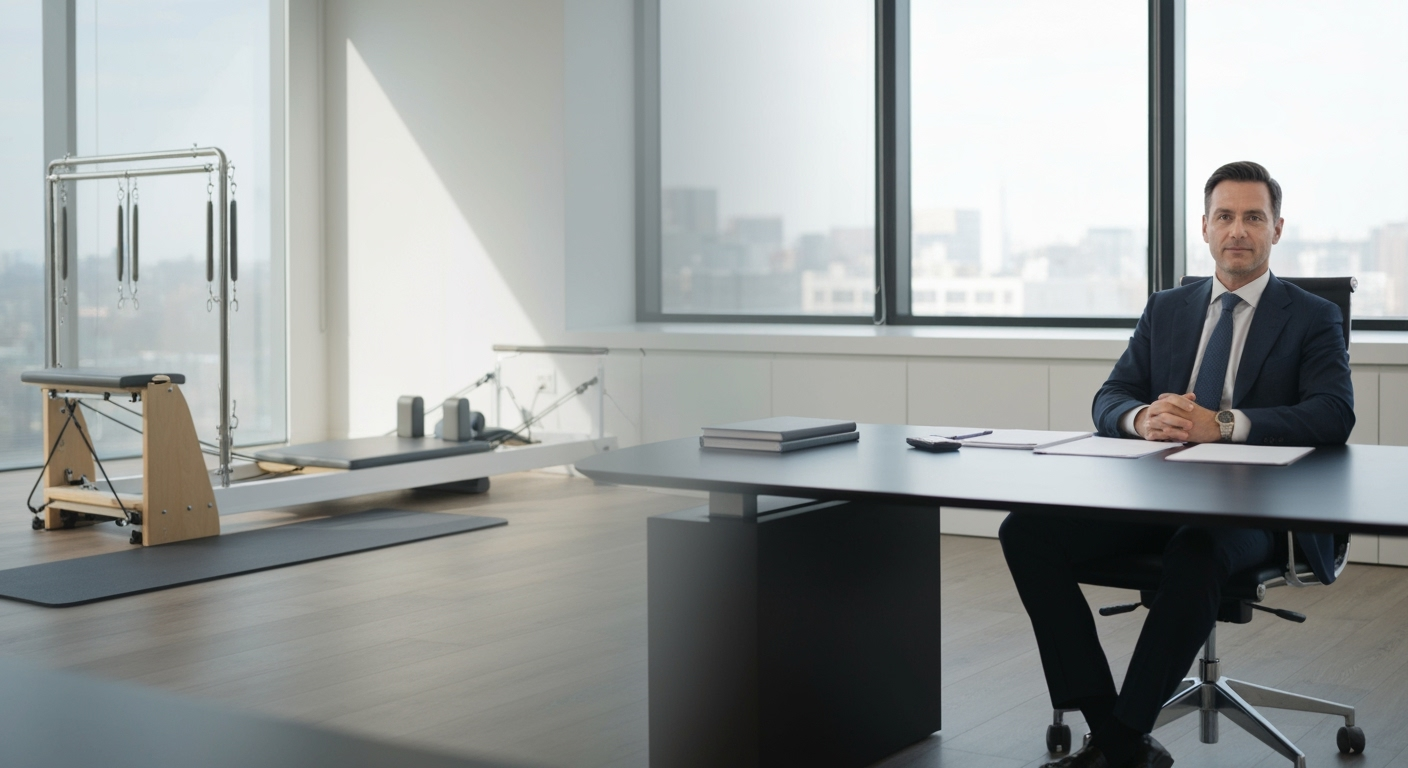The CEO's Core: Pilates for Business Stability?
Hello, fellow leaders and innovators! Sandeep Mundra here. You might know me from the tech world, navigating the ever-changing currents of digital transformation. But today, I want to talk about something a bit different, something that has surprisingly profound parallels to business: Pilates.
Yes, you heard that right. Pilates. Bear with me, because what I've learned on the mat has significantly reshaped my approach to leadership and organizational strength. It's all about the 'core,' isn't it? Both physically and organizationally.

Core Strength: Business Foundation
In Pilates, everything starts from your core. It's your powerhouse, the stable center from which all movement originates. Without a strong core, your limbs flail, your balance falters, and your efficiency drops. Sound familiar to anyone running a business?
An organization's core is its foundational strength: its values, its culture, its clear mission, and its most critical operational processes. If these are weak, even the most brilliant strategies or talented individuals will struggle to perform effectively.
Client story: I remember working with Michael from Seattle, founder of a promising AI startup. They had fantastic tech, but their internal communication (their 'core' culture) was a mess. Teams weren't aligned, decisions were delayed. We helped them implement clearer protocols and foster a culture of open feedback. Within six months, their project delivery speed doubled. It was like watching someone finally engage their core muscles!
What do you think is the absolute 'core' of your business?
Flexibility Meets Structure
Pilates emphasizes not just strength, but also flexibility. A rigid body is prone to injury. A flexible body can adapt, bend, and recover. The same goes for business. We need structure, clear roles, and defined processes. But too much rigidity can stifle innovation and make you brittle in the face of market shifts.
The art of leadership is knowing when to hold firm and when to gracefully adapt.
Team anecdote: There was this one time during a tight deadline for a client, Saeed from Dubai. Our Ahmedabad team, led by Jigar, was facing a major scope change. The old way of doing things would have meant a complete re-do and missed deadlines. Instead, Jigar, with his team's input, proposed a modular approach, adapting our agile sprints to accommodate the change without derailing the whole project. That's business flexibility in action!
Here's a funny one: What's a developer's favorite Pilates move? The 'Bug Fix Roll-Up' – because it looks easy until you actually try to get it right, and then you just want to lie down and cry.
Finding that sweet spot between structure and flexibility is crucial. It allows you to pivot when necessary, without losing your fundamental stability. It’s like a tree bending in the wind instead of breaking.
Have you ever had to make a last-minute pivot that saved a project? Share your war stories!
Balance: The Key to Resilience
Pilates also hones your balance. Not just standing on one leg, but the balance between opposing muscle groups, between effort and release. In business, this translates to balancing short-term gains with long-term vision, profit with purpose, and control with empowerment.
Success story: Anna from London, running a sustainable fashion brand, once told me about a period of rapid growth. She was so focused on scaling that she started losing touch with her core values of ethical sourcing. It was like overworking one muscle group. She took a step back, re-evaluated, and found a better balance, even if it meant slower growth. Her brand's integrity, and ultimately her customer loyalty, soared.
Developer humor: Why did the project manager bring a ladder to the meeting? Because he heard the project was 'climbing the critical path' and wanted to make sure everyone was balanced!
This balance builds resilience. When challenges hit – a market downturn, a competitor's aggressive move – an organization with good balance can absorb the shock and recover more gracefully. It doesn't topple over at the first sign of trouble.
How do you ensure balance in your own leadership style?
Breathing and Presence
In Pilates, conscious breathing is fundamental. It oxygenates your body, calms your mind, and deepens your connection to your movements. For us CEOs, 'breathing' means taking a moment, being present, and stepping back from the daily whirlwind to gain perspective.
Personal reflection: Over the years, especially during high-pressure times at IndiaNIC, I've learned the importance of these 'breathing moments.' It could be five minutes of quiet reflection, a quick walk, or even just a conscious pause before responding to a tense email. It prevents burnout and leads to clearer decisions.
Client perspective: Raj from Singapore, a seasoned entrepreneur, shared how he institutes a 'no-meeting Wednesday' policy for his leadership team. It's their collective 'breathing room' to focus on deep work and strategic thinking. The impact on their innovative output was remarkable.
This presence allows us to lead with intention, not just reaction. It’s about being grounded, even when the business environment feels chaotic. Just like a Pilates instructor guides you to feel every movement, a present leader helps the team feel connected to the company's direction.
What are your 'breathing techniques' for staying present amidst the chaos?
My Core Takeaway
So, next time you hear someone mention Pilates, don't just think of exercise. Think of it as a blueprint for organizational health: building a strong core of values and operations, fostering flexibility to adapt, maintaining balance for resilience, and practicing presence for intentional leadership.
It's a continuous journey, both on the mat and in the boardroom. But by focusing on these core principles, we can build businesses that are not just successful, but also stable, adaptable, and truly resilient. What's your 'CEO's Core' philosophy?




